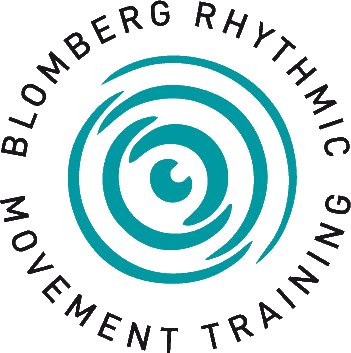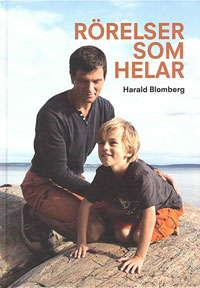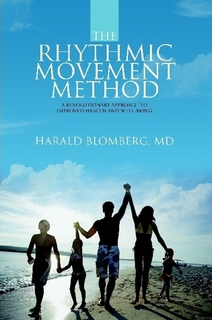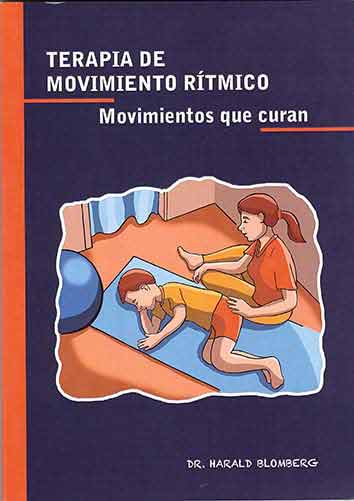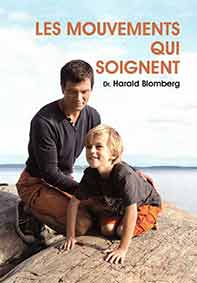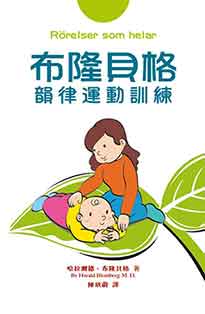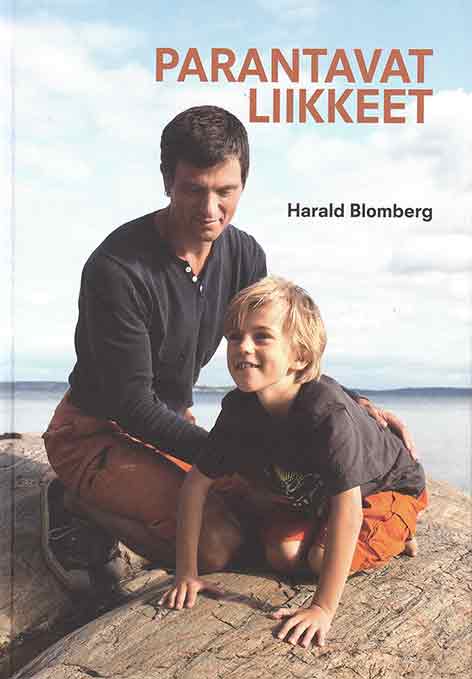Rising prescription of central stimulants in Sweden
Central stimulants like amphetamine and Ritalin are highly addictive narcotic drugs. Ritalin was originally introduced in Sweden but was withdrawn from the marketplace in 1968 because of its escalating abuse. Since the 1990`s Ritalin has again become accepted by Swedish doctors and more and more children with symptoms of hyperactivity are now regularly medicated with central stimulants.
In a booklet published in 2004 “Briefly about ADHD in children and adults” the Swedish National Board of Health recommends the use of central stimulants as a treatment of ADHD. ADHD is a disorder distinguished by attention disorder, hyperactivity and impulsivity. The Board emphasizes how well documented these drugs are especially in large studies on children, how effective they are and how slight their side effects are.
The National Board writes:
“Due to the rapidly growing knowledge about ADHD in Sweden and the fact that we now have taken part of international experience of medication the number of children treated with central stimulants has rapidly increased in the same way as in other countries.”
It is certainly true that the knowledge about the effects of central stimulants increases, not least the knowledge about the great risks and adverse effects of these drugs. However the Swedish National Board of Health has chosen to say nothing about these risks and instead give an extremely flattering description of these drugs.
As a counterweight to this biased description of central stimulants I will, in a short summary, give an account of the very harmful effects of central stimulants that numerous research studies have found, effects that the Swedish National Board of Health has chosen to say nothing about.
The use of central stimulants in the United States
The increased prescription of central stimulants in Sweden during the last years would be incomprehensible if it were not seen in the light of the development in the United States.
In the United States there is a long tradition of treating hyperactivity with central stimulants. Ritalin is the most prescribed central stimulant and is manufactured by Ciba Geigy. It has been used to treat hyperactivity since the 1950s but during the nineties the production of Ritalin has increased tenfold. It has been estimated that 11 % of American school children nowadays are medicated with Ritalin or other central stimulants.
The promoters of this development have been the big pharmaceutical companies that market central stimulants and the National Institute of Mental Health (NIMH), a government agency, that advocates the increased diagnosing and drugging of America´s children.
NIMH gives millions in research funds to studies on central stimulants. Nearly all the money goes to ADHD/Ritalin advocates. None goes to critics. None of its funding is aimed at discovering the dangers of long-term use of Ritalin and other stimulants.
1998 NIMH organized a consensus conference on ADHD/Ritalin. According to the plans, side effects of central stimulants were not to be discussed during the conference and no critics of central stimulants were invited to speak at the conference. The psychiatrist Peter Breggin appealed to the umbrella organization of NIMH, the National Institute of Health (NIH), to create more balance in the conference.
NIH decided that Peter Breggin should be invited to speak as the scientific presenter on the overall subject of adverse drug effects in children. He made a thorough survey on the research of central stimulants, that he later published in his book “Talking back to Ritalin”. (1)
The use of central stimulants in hyperactivity in Sweden
The most common drugs to be prescribed to hyperactive children in Sweden are central stimulants like Amphetamine and Methylphenidate or Concerta. On the whole all central stimulants have similar effects and adverse effects.
In its booklet the Swedish National Board of Health writes that there are no other psychoactive drugs that have been so thoroughly studied as central stimulants. However, the Board admits, that it is not yet known how effective these drugs are in the long run after many years of treatment.
The National Board of Health praises central stimulants for increasing the power of concentration and decreasing hyperactivity. Moreover “the drug seems to improve cognitive abilities like problem solving.”
Concerning the danger of addiction and future abuse the National Board claims that treatment with central stimulants “instead seem to diminish” the risk of future abuse.
The Board further writes that side effects in most cases are slight. In rare cases it may happen that the “mind and behavior of the child can be so adversely affected that the treatment must be interrupted”.
Let us scrutinize these assertions by means of Peter Breggin´s survey on the research of central stimulants.
No psychoactive drugs for children have been as thoroughly studied as central stimulants?
Ritalin was first approved in the 1950s, but the FDA has been unable to produce the original documents from that long ago. In 1982 FDA approved a long-acting modification of Ritalin that had been tested for two weeks on 90 children.
And in spite of the fact that central stimulants had been used in the USA for hyperactive children for more than fifty years and in spite of all alarming reports of serious adverse effects, including brain damage in monkeys who have been given small doses of central stimulants on rare occasions, no scientific research on long term effects of central stimulants had been published until 1999. That year the so called MTA study of children who had been medicated with stimulants for one year was published. Before this most studies followed up treated children at most for a couple of months.
The MTA Study of 1999
This first MTA study was a triumph for the pharmaceutical companies and the ADHD/Ritalin advocates among psychiatrists.
One of the principal researchers of this first MTA study, professor Peter Jensen, made the following statement concerning this study: “ We did the best study which ever has been done on planet Earth, which helped parents and teachers with these children – and what did it show? It showed that medication was still much more effective for these children.” (5)
According to a well known British child psychiatrist, Eric Taylor, the most important conclusion of the study was that carefully carried out medication is better than other treatment. This would require medication to be available for children with ADHD.
The result of this study was widely publicized and has caused an ever increasing labelling of children with ADHD and treatment of them with central stimulants all over the world.
The 2007 MTA study, a follow up study after three years
In 2007 a follow-up of the MTA study, made by the same research team, was published. In this study the medicated children had been followed for three years.
The result of this study was very disappointing to the research team. One of the principal researchers, Professor William Pelham, made an appearance on the BBC program Panorama stating that after 36 months of treatment there were no positive effects whatever, contrary to what the research team had expected. According to Professor Pelham nothing indicated that drugs are better than no treatment at all in a longer perspective and he stressed that this information should be made very clear to parents. (6)
According to Professor Pelham the report showed that initially the good effects of the treatment in children with the most severe problems had completely disappeared when the children grew older.
The report also established that central stimulants obstruct the normal growth of children which also affects the growing brain.
The study furthermore demonstrated that central stimulants are connected with a more aggressive and antisocial behaviour and increased risks of future criminality and drug abuse.
Children between 11 and 13 years who participated in the study more often used alcohol and illegal substances compared to a control group of classmates. The report concludes that the higher frequency of beginning abuse at an early age requires clinical attention.(7)
With a characteristic English understatement Professor Pelham uttered on BBC “I think we exaggerated the positive effects of medication in the first study”.
Do central stimulants improve the power of concentration and diminish hyperactivity and impulsivity?
The “positive” effects of central stimulants are caused by the fact that they make children more obedient and docile and willing to do as they are told, especially doing boring, monotonous classroom tasks.
Several animal studies have shown striking similarities between the reactions of children and animals when they are given central stimulants. Before the consensus conference in 1998, Peter Breggin summarized two dozen scientific reports on the effects of central stimulants on animals in the following way:
“First, stimulants suppress normal spontaneous or self-generated activity, including curiosity, socializing and play.”
“Second, stimulants promote stereotyped, obsessive-compulsive, overly focused behaviors, that are often repetitive and meaningless”.
Likewise, in children, spontaneous and social behaviors and play are suppressed and replaced by obsessive, repetitive and meaningless behaviors. Their spontaneity and curiosity will diminish and they will withdraw from socializing with other children.
These are the very effects of central stimulants that are highlighted as improvements. But one must ask if such symptoms should not arouse concern and reflection instead of being applauded as improvements.
Do central stimulants improve cognitive abilities and academic success?
In 1976 a double blind study could show that central stimulants suppress “desirable behaviors that facilitate learning”. The authors found that even when the children`s behaviors were rated as improved no improvement of scholastic achievement could be found.
In 1992 James Swanson, who is a prominent ADHD/Ritalin advocate, and his colleagues warned that “cognitive toxicity may occur at commonly prescribed clinical doses“. The children become withdrawn and over focused and may seem “zombi-like“. According to Swanson cognitive toxicity is common and may occur in 40% of treated cases and the over focusing of attention may impair rather than improve learning.
In 2010 an Australian study of 131 children who had been treated with central stimulants was published. After 20 years follow up the study found no improvement of behavior or academic results in the treated children compared to a control group with similar symptoms who had not been medicated.
For those on medication it was 10 times as likely that classroom performance would be below average. The study also found that medication increased blood pressure. The physical effects of the medication follow the child into adulthood.
Do central stimulants diminish the risk of future drug abuse?
The assertion that central stimulants diminish the risk of future drug abuse should not remain unchallenged. The US Drug Enforcement Administration (DEA) repeatedly has expressed great concern that treatment with Ritalin will lead to abuse of other drugs.
1995 DEA reported that “a number of recent studies, drug abuse cases, and trends among adolescents from various sources, indicate that methylphenidate (Ritalin) use may be a risk factor for substance abuse.
At the 1998 Consensus Conference Professor Nadine Lambert of the University of California, Berkeley, presented a unique long-term study comparing future drug abuse in two groups labelled ADHD.
The study compared one group who had been prescribed stimulants as children with another group that had not been given medication.
She found a significant correlation between stimulant treatment in childhood and later drug abuse. She told the conference that the prescription of stimulants to children for a year or more was correlated with increased “lifetime use of cocaine and stimulants”.
She concluded in her paper that childhood use of stimulants “is significantly and pervasively implicated in the uptake of regular smoking, in daily smoking in adulthood, in cocaine dependence, and in lifetime use of cocaine and stimulants.”
The MTA study found that children between 11 and 13 years who participated in the study more often used alcohol and illegal substances compared to a control group of classmates.
Additionally the MTA study established a strong connection between medication with central stimulants and incipient criminality among children between 11 and 13 years and that the risk of criminality was linked to the duration of the medication.
And with all those pills around, how much of that actually goes to friends? Some studies have said it’s about 30 percent.
Are the side effects of central stimulants slight?
From Breggin´s survey it is evident that the side effects of stimulants far from being insignificant are both serious and extremely common. In several studies the frequency of side effects is more than 50 %.
The most common side effects are loss of appetite, drowsiness, withdrawal, loss of interest in others and depression. In one study of 41 children between 4 and 6 years of age 75% suffered from loss of appetite, 62% of drowsiness and 62 % were uninterested in others. In another study of 83 somewhat older children 45 % had side effects mostly as withdrawal, sadness or crying.
Obsessive compulsive symptoms are very common side effects. They appear as a compulsive repetition of simple activities like endlessly playing games on the computer. In one study with 45 children 51% developed compulsive symptoms that in certain cases were very serious. One child became so obsessed with doing a good job raking leaves, he would wait for each one to fall from the tree.
Another played Lego for 36 hours without breaking to eat or sleep.
In another study 42 % of the children produced an obsessive over-focusing after a single dose of stimulants. The children were sometimes unable to stop performing a task that had been assigned to them.
Tics and movement disorder are also very common side effects. In a study with 45 children 58% developed tics and abnormal movements. In another study with 122 children 9% developed tics and abnormal movements. One child did not recover and developed an irreversible syndrome with facial twitching, head turning, lip smacking, forehead wiping and vocalizations.
Do central stimulants cause brain damage?
Many animal studies during the last 30 years have shown that relatively low doses of amphetamine kill brain cells and cause permanent brain damage. The drug will cause a lasting loss of receptors for the neurotransmitter dopamine due to the fact that the dopamine transmitter system is over-stimulated by central stimulants.
In one study with monkeys it could be shown that administration of two relatively low doses of amphetamine, 2 mg/kg body weight four hours apart, caused persistent, marked decreases in dopamine synthesis and concentration up to three months later. In one of the animals the dysfunction still continued after eight months. A dose of two mg/kg is not much more than a child on treatment will get per day.
This study is not an exception. Drug levels of Ritalin on a mg/kg basis can be as high as those reported to cause brain damage in animals according to a scientific report.
According to a textbook of psychiatry by Jaffe chronic amphetamine use in monkeys causes damage to cerebral blood vessels, brain cell death and micro hemorrhages.
It is not unusual that children are medicated with central stimulants all through childhood and adolescence. No studies have been made what brain damage such chronic amphetamine use will cause in humans. For the time being we must therefore draw our conclusions from animal studies. Animals who recieve central stimulants in equivalent doses to children get permanent brain damage.
The Swedish national Board of Health says nothing about these facts and confines itself to assert that the side effects of central stimulants are insignificant.
Resistance against the big pharmaceutical companies’ marketing of central stimulants
According to an article in NY Times March 31 2013 a recent study by CDC has shown that 6.4 million children ages 4 through 17 had received an A.D.H.D. diagnosis at some point in their lives, a 16 percent increase since 2007 and a 41 percent rise in the past decade. About two-thirds of those with a current diagnosis receive prescriptions for central stimulants. Annual sales of these drugs reached $9 billion in 2012.
Fifteen percent of school-age boys have received an A.D.H.D. diagnosis, the data showed; the rate for girls was 7 percent. Diagnoses among those of high-school age — 14 to 17 — were particularly high, 10 percent for girls and 19 percent for boys. About one in 10 high-school boys currently take A.D.H.D. medication, the data showed.
According to this article several prominent American child psychiatrists were upset with these figures and the article and an editorial in the NY times is believed to reflect a growing unease with American reliance on psychiatric drugs, especially for children.
When 11% of America´s children are treated with central stimulants the market in the US is reaching a saturation point. The big pharmaceutical companies have therefore turned to other markets in Canada and Europe where the share of children who are treated with these drugs has been rapidly rising in the last years.
In Sweden the marketing of central stimulants is greatly helped along by the National Board of Health. Between 2000 and 2012 the number of Swedish children who were prescribed central stimulants rose from 2000 to 25,000. Moreover the pharmaceutical companies are now also marketing central stimulants for adults diagnosed with ADHD and currently 25,000 adults are treated with central stimulants in Sweden.
The pharmaceutical company Janssen-Cilag has applied to the European Medicines Agency for approval of Concerta for adults in Europe. The application was withdrawn after the agency had established that the research studies that were attached to the application could not show that the effect of Concerta were better than sugar pills and that Concerta directly could cause aggressiveness, anxiety and depression and that there was a considerable risk of spreading.
In Sweden the marketing of central stimulants is greatly helped along by the Swedish National Board of Health. Moreover the pharmaceutical companies also have been marketing central stimulants for adults diagnosed with ADHD and the prescription of ADHD drugs in Sweden both to children and adults is rapidly increasing in spite of the standpoint of the European Medicines Agency.
Case study
Kalle was 11 when he started rhythmic movement training in august. He had taken amphetamine for five years and now took 25 mg daily.
Kalle was early to develop and learned to walk when he was 10 ½ months. He was very defiant when he was 2-3 years and when he was 6 he had so severe challenges with hyperactivity, concentration and temper tantrums that he was given medication with amphetamine. The first two years at school he managed to stay in an ordinary class with a personal assistant but then he was moved to a special class with seven students and five adults.
At his first visit to me it was apparent that he was a very hyperactive boy with great problems to sit still. His endurance was very poor and he was very impulsive and very easily disturbed. Nearly every day he got severe temper tantrums. He had great problems playing with other children and team sports were especially challenging. He preferred to play on his own and was constantly busy playing Game Boy or similar games. He had great difficulties to interrupt such activities which he could continue for hours.
Kalle had several retained primitive reflexes: the Moro reflex, the TLR, the STNR and the Spinal Galant reflex. He had no problems doing the rhythmic exercises and seemed to enjoy them.
Kalle did not like his medication and wanted to stop taking it and go back to his ordinary class at school. He seemed to be very motivated for these goals.
He was instructed to do passive and active rhythmic exercises every day and exercises for the Moro and the TLR reflexes a few times a week. In addition his parents were encouraged to reduce his medication from five to four tablets a day. At his next visit his father reported that he had not been motivated to do the active exercises every day but he had always enjoyed being rocked and had done the active exercises when he felt like it.
After a little more than half a year he had become more motivated to do the rhythmic exercises himself and reported that he felt calmer and more harmonious than before. He had begun to seek body contact with his parents and wanted to sit in their lap, which he had never done before.
His temper tantrums had diminished and his parents observed that he had become more reasonable and that he could follow a line of argument in a way he had never been able to. Also at school his changed behaviour had been noticed and it had been decided that he should move to a big class after summer vacation. He was to be assisted by a resource person.
Before summer vacation I had recommended the parents to reduce his medication with another tablet. However, at his next visit after the summer his parents reported that the school had protested strongly when they heard he was going to reduce medication and had even threatened not to move him to a normal class. Therefore the parents had not reduced his dose. After that it was more difficult to motivate Kalle to do the exercises and only after persistently reminding him he had done them about every third day.
It was now decided that his medication should be reduced with one tablet immediately and then again after his next visit to me if he had done the exercises at least five times a week.
At his next visit in November Kalle had reduced his dose with one tablet and his behaviour was completely changed. Previously it had been difficult to interrupt his playing Game Boy in the waiting room.
Now he romped and wrestled on the floor with his little brother whenever he had an opportunity. His parents reported that he had now taken responsibility for the rhythmic exercises and had done them every day on his own. His parents only needed to remind him. He regularly took part in the reflex integration exercises assisted by his father.
When he had done rhythmic exercises for one and a half years his medication was reduced to two tablets a day. No one noticed any difference. He succeeded beyond all expectation at school. He continued to do the rhythmic exercises on his own and the isometric exercises with his father and integrated his TLR, Spinal Galant and Moro reflexes.
He had no more problems with endurance, concentration, attention or hyperactivity. His temper was even and he had no temper tantrums. Before summer vacations he got nothing but praise from his teachers. He now reduced his medication with another tablet. In December, after doing the exercises for two years and three months, he took the last tablet. In February, two and a half years after his first visit to me he could report that he felt good and school went well in spite of the fact that he had not done the exercises for several months.
After another year Kalle read in the newspaper that persons who had been diagnosed with ADHD needed a psychiatric evaluation before they could get a drivers licence. He then made an appointment with the child psychiatric clinic which had labelled him as suffering from ADHD and prescribed medication. He asked them to cancel his diagnosis since he no longer had any symptoms. After having done all the required tests they had to cancel the diagnosis.
